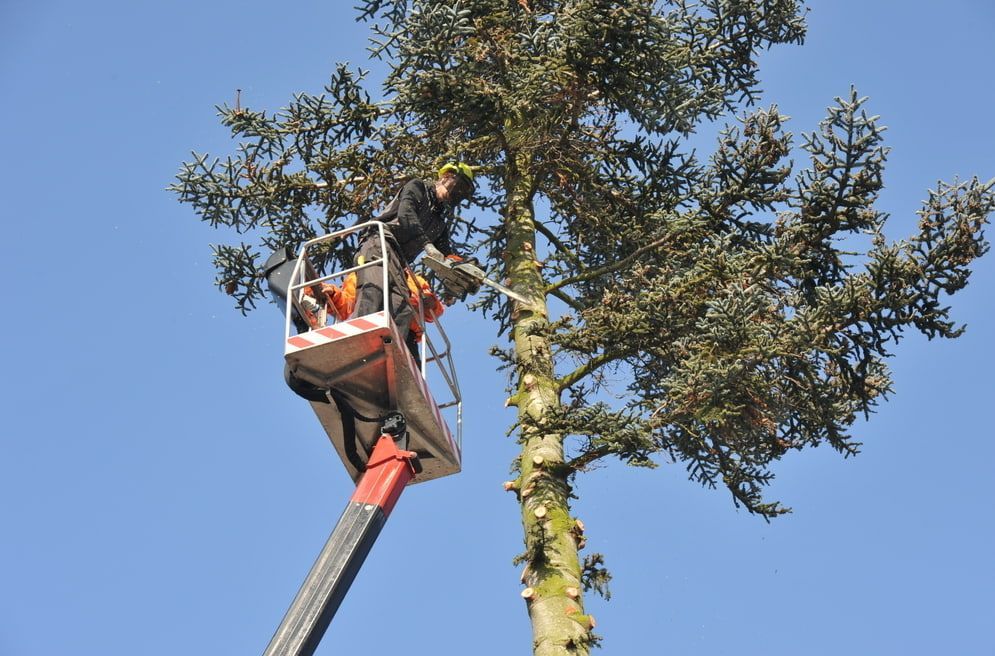8 Signs It’s Time to Remove a Tree
Trees bring shade, shelter, and beauty to a property, but sometimes they present risks instead of rewards. Knowing when to
remove a tree is critical for keeping your home, family, and surroundings safe. Left unchecked, a failing tree can cause property damage, injuries, or costly emergencies. By learning the warning signs early, you can take steps to protect your space and avoid unexpected hazards
1. Leaning Beyond Safe Limits
A tree that begins to lean noticeably is more than an eyesore—it can be a serious hazard. While some species naturally grow at a slight angle, a sudden shift in direction or a lean that worsens is often a sign of instability. Heavy storms, soil erosion, or weakened roots can all contribute to this issue. A leaning tree near a home, fence, or power line can become a significant safety risk, especially if its roots fail to support its weight. Professional assessment is critical, as an unstable tree must often be removed before it topples.
- Gradual leaning is commonly caused by compacted or shifting soil beneath the tree.
- Sudden tilting after storms may indicate partial root failure or trunk fractures.
- Leaning trees close to property or pedestrian areas pose a significant danger of collapse.
2. Extensive Dead or Falling Branches
When branches regularly break away from a tree, it is often a symptom of deeper problems. Dead or brittle limbs may drop without warning, even in calm weather, placing people, vehicles, and buildings at risk. While occasional branch loss can be normal, frequent shedding signals structural weakness or disease. The danger increases if large limbs hang over roofs, play areas, or driveways. Removing these branches may provide short-term safety, but persistent decline often means complete tree removal is the only safe solution.
- Brittle or hollow branches often suggest a lack of internal strength.
- Falling limbs can crack tiles, smash car windscreens, or injure passers-by.
- Ongoing branch loss usually points to advanced decay that cannot be reversed.
3. Visible Signs of Disease or Decay
Tree health can decline silently, but many visible symptoms provide early warnings. Fungal growth, hollow trunks, and peeling bark are all red flags that the tree’s structure has been compromised. In some cases, infections such as root rot spread below ground, gradually eroding stability until the tree is no longer safe. These issues rarely improve without intervention. An arborist can identify whether disease management is possible or if tree removal is necessary to prevent collapse and protect the surrounding landscape.
- Mushrooms or fungal clusters around the base often indicate root rot.
- Cavities and peeling bark are signs of internal decay.
- Sticky sap or visible cankers may signal advanced disease.
4. Root Damage Compromising Stability
Roots are the foundation of any tree, anchoring it securely and supplying nutrients. The entire tree is put at risk when roots are damaged or diseased. Construction works, compacted soil, or pest infestations can interfere with the root system, reducing its ability to support the trunk. Roots may also become invasive, damaging nearby paving, plumbing, or drainage systems. Once structural integrity is lost, the likelihood of tree failure rises sharply. In these scenarios, tree removal is often unavoidable to prevent further damage.
- Excavation and construction can sever key roots, weakening stability.
- Exposed or decaying roots reduce the anchorage of the tree.
- Aggressive root systems may cause damage to driveways, pipes, or retaining walls.
5. Proximity to Property or Infrastructure
As trees mature, their size can become a problem for surrounding structures. What begins as harmless shade may eventually conflict with buildings, fences, or underground systems. Overhanging branches can scrape roofs and gutters, while expanding roots may crack foundations or disrupt utilities. When growth compromises property safety, proactive removal is often more cost-effective than waiting for repairs to become unavoidable. Planning by managing tree placement ensures long-term balance between nature and built spaces.
- Branches growing into powerlines create electrical hazards.
- Roots undermining driveways or patios can cause structural damage.
- Overhanging limbs across pathways or roads increase liability risks.
6. Storm Damage & Structural Cracks
Severe weather places enormous stress on trees, often leaving behind damage that is not immediately visible. High winds can split trunks, tear away branches, or cause partial uprooting. Even when a tree appears to survive a storm, hidden fractures can make it unstable and prone to collapse in future conditions. These weaknesses are particularly dangerous if the tree is near frequently used areas. Having an arborist inspect storm-damaged trees is essential to determine whether remedial pruning will suffice or removal is required.
- Splintered limbs that hang loosely after storms are hazardous.
- Cracks running along the trunk often compromise structural integrity.
- Uprooted trees may remain standing temporarily, but are usually unstable long-term.
7. Restricted Growth or Decline Over Time
Not every tree removal is urgent. Some trees slowly lose vitality, becoming sparse, misshapen, or prone to pests. Declining health may stem from unsuitable soil, competition with larger trees, or old age. While these trees may not pose an immediate hazard, their reduced strength makes them vulnerable to future storms or disease. Replacing them with species better suited to local conditions ensures a healthier and more attractive landscape. In many cases, proactive removal of struggling trees creates opportunities for new growth.
- Sparse foliage compared with previous seasons indicates a decline.
- Stunted growth may be caused by unsuitable soil or a lack of nutrients.
- Replanting with native trees often offers a more sustainable alternative.
8. Safety Hazards & Liability Concerns
Trees that pose safety risks can cause more than property damage—they may cause injury, disputes, or even insurance issues. A falling branch or encroaching roots can create costly problems if left unmanaged. Proactive removal reduces these risks and helps property owners meet their responsibilities.
- Trees overhanging driveways or walkways increase the chance of accidents.
- Branches extending onto neighbouring land can cause disputes.
- Insurance claims may be affected by known but unmanaged hazards.
Safeguard Your Space with Our Tree Removal Services
Trees add beauty and value, but when they become the safest solution. Recognising the early warning signs helps prevent catastrophes and protects both property and people. If you’ve noticed leaning, decay, or other signs of decline, our professionals are here to help. Professional assessment and removal ensure the process is carried out safely and responsibly, leaving your landscape secure for years.
Get in touch with us at
Chris Hackett Tree Services for safe and reliable
tree removal in Ballina.










